 Image search results - "ga" Image search results - "ga" |

Three-day (Aug. 9-11, 2006) rowing route around the southern half of the lake by the Kyoto Univ. rowing club.1st day: Home base in Seta River to Manohama (crew change), then to Omi-Maiko.
2nd day: Omi-Maiko to Manohama, then to Chomeiji.
3rd day: Chomeiji to Manohama where crew changes. Then to home base in Seta River.
|
|
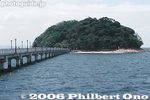
Takeshima island is connected by a bridge. The island is uninhabited, but has a Yaotomi Jinja Shinto shrine (八百富神社) dedicated to goddess Takeshima Benten. Designated as a Natural Monument for its flora which greatly differs from that on shore.
|
|

Kenrokuen is one of Japan's three most famous gardens (besides Korakuen in Okayama and Kairakuen in Mito, Ibaraki). The garden was originally the castle garden for Kanazawa Castle. Katsurazaka Entrance to Kenrokuen Garden 桂坂口
|
|

Established in 1617, Tsukiji Hongwanji temple is the Tokyo headquarters of the Nishi Hongwanji Jodo Shinshu sect. The present temple, based on Indian architecture, was built in the 1930s.The temple is the only one in Japan which is under the direct control of the sect. Its head priest is the Monshu Abbot himself. April 8 is observed as Buddha's birthday, called Hana Matsuri ("Flower Festival) in Japan.
|
|

The Kusatsu Shukuba Matsuri Festival is held on April 29 to celebrate Kusatsu's history as a post town on the Nakasendo and Tokaido Roads. Numerous events and activities are held such as flea markets, street & stage performances, and Japanese danThis was the first time I saw hula dancing in Shiga. Surprised to see hula dancing (Kusatsu Station plaza).
|
|

Very little remains of Otowa castle originally built by Lord Gamou Sadahide. Two battles took place here in 1496 and 1503. Road to Otowa Castle on the hill seen on the left.
|
|

Hino was home to many Omi merchants who plied up and down Japan during the Edo Period to sell and trade their wares. They became quite successful selling medicines, lacquerware, sake, etc. Those from Hino were called Hino shonin (Hino merchants).
|
|

Hino's most prominent shrine is best known for the Hino Matsuri festival on May 2-3. The shrine was originally atop Mt. Watamuki, Hino's tallest mountain. It was moved to its present location in 796.
|
|
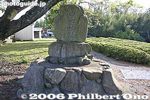
Nakano Castle, also known as Hino Castle, built in 1534 by Lord Gamou Sadahide (1508-1579). In 1582, when Oda Nobunaga was assassinated in Kyoto, Lord Gamo Katahide brought Nobunaga's wife and children from Azuchi Castle to Hino Castle for their safe
|
|
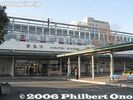
JR Karatsu Station
|
|
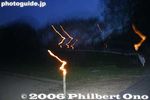
Held annually on May 4, the Misaki Shrine Fire Festival (hi-matsuri) has local people carry 2-meter long torches from their homes to the shrie where a 5-meter tall pile of bamboo is lit to make a towering inferno.A taiko drum is also carried and beaten.
|
|
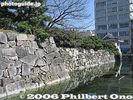
Higo Moat and turret (?)This is near the Karatsu City Hall. From Karatsu Station, it takes about 25 min. to walk to the castle tower.
肥後堀
|
|

PR poster for the Kamogawa Odori geisha dance held during May 1-24 in Pontocho.
|
|

Azuchi Nobunaga Matsuri used to be held on the first Sunday in June, but it's now held in Nov. (since 2020). The festival is dedicated to Oda Nobunaga who built Azuchi Castle. Parking available at nearby Bungei no Sato.
|
|

Kakegawa Castle as seen from the train
|
|

Kakegawa Station, south entrance
|
|

Kanagawa Prefecture's largest Awa Odori is held annually during the last weekend in July in this city of Yamato. Preview event near Yamato Station.
|
|

Road marker. Established in 1642, Moriyama-juku was the sixty-seventh of the sixty-nine stations or shukuba post towns on the Nakasendo Road. It is the eighth Nakasendo station in Shiga (following Musa-juku in Omi-Hachiman).
|
|

Three boats are used for the trip, sighted here off shore near JR Hira Station on the Kosei Line. 湖西線比良駅の沖
|
|

Held for two evenings on Aug. 14-15 during the obon season, people light their torches at Gosha Shrine and proceed to Hibarino park where the torches are thrown up to a large pine tree. The more torches get stuck on the tree, the better the next harvest.This is Hibarino park. The pine tree on the right of the small hill is the target for the torches. This park also serves as the Otabisho during the Hino Festival.
|
|

JR Tsuruga Station
|
|

Hanegi Park is near Odakyu Umegaoka Station ("Umegaoka" means plum hill). 小田急梅ヶ丘駅
|
|

Welcome to IbarakiTrain platform of Kairakuen Station.
|
|

Well-wishers look on as rowers embark for the race taking place at the same venue where the rowing competition was held at the 1964 Tokyo Olympics.
|
|

Kanayama Jinja Shrine is a small shrine within the grounds of the Wakamiya Hachimangu Shrine near Kawasaki Daishi Station. On the first Sun. of April, it holds this now-famous Kanamara Festival nicknamed the Phallus or Fertility Festival. Festival starts at 11 am. But a large crowd was already there well before that time. Entrance to shrine on the day of the Kanamara Festival. (If you're below age 18, please leave now.)
|
|
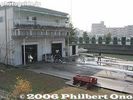
Seta Rowing Club's 2-story clubhouse located in Otsu, Shiga Prefecture. The club is a registered NPO. The club is named after Seta River at the southern tip of Lake Biwa. Regattas are also held on the river, Lake Biwa's sole outflowing river.
|
|
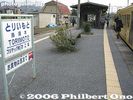
Toriimoto-juku is the sixty-third of the sixty-nine stations or shukuba post towns on the Nakasendo Road. It is the fourth Nakasendo station in Shiga (following Bamba-juku in Maibara), and one of ten Nakasendo stations in Shiga.
|
|

Cherry tree forest near the Nishi-guchi (west) gate.
|
|

The outdoor architectural museum is within Koganei Park in Koganei, Tokyo. This is the Visitors Center.
|
|

Bird's eye view of Shirakawa-go from Ogimachi Castle ruins.
|
|

Side view of Wada-ke House
|
|

JR Nagano Station festooned with Olympic logos.
|
|

PR poster designed by Tetsuo OshiroPoster for the race.
京都大学ボート部OBの尾城徹雄様に作成したポスター。大学内や大津市石山商店街などで張り出された。
|
|

Lake Biwa is near the center of Honshu island between Nagoya and Kyoto.
|
|
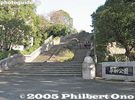
Entrance to the Peace Park
|
|

From late April to early May, five long strings of giant carp streamers swim in the air high above the Sagami River in Sagamihara, Kanagawa. This event was started in 1988.
|
|

Shirakawa-go is also a National Important Traditional Townscape Preservation District (重要伝統的建造物群保存地区).
|
|
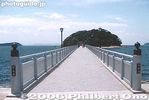
400-meter long bridge to Takeshima island near JR Gamagori Station. The island is made of granite. Circumference is 680 meters. There's a walking path around the island.
|
|

Kenrokuen is classified as a "kaiyu-shiki teien" (回遊式庭園) or "circular-strolling Japanese garden." It's a common and classic Japanese garden design where you simply walk around the garden, usually around a central pond.
|
|

Tsukiji Hongwanji temple gate with wisteria crest.The emblem is a wisteria flower and symbol of the Jodo Shinshu sect.
|
|
|
|

Barrels of Hino merchant sake
|
|
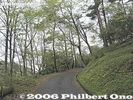
The castle is somewhat out of the way. It's a 15-min. walk from the nearest bus stop.
|
|

Later the shrine became Lord Gamou's family shrine and it was revered by Hino merchants during the Edo Period. This is the Shrine grounds. Map
|
|

The castle was abandoned in 1597. Only a few stone walls and shrines remain adjacent to Hinokawa Dam. This is one entrance to Nakano Castle. Map
|
|

Pontocho Kaburenjo theater, venue for Kamogawa Odori.
|
|
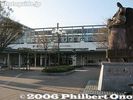
JR Karatsu Station
|
|
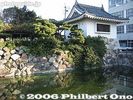
Turret (?)
|
|
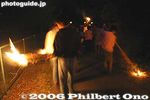
Procession of local residents carrying torches to the shrine. Map
|
|

Being my first regatta, I was at first daunted by the rowing terminology for the different types of boats.
|
|

The Azuchi Nobunaga Festival's main venue was here, next to Azuchi Castle (hill on right). MAP
|
|

Kakegawa Station, north entrance
|
|

Yotsuashi-mon GateMain gate to enter the castle grounds. A reconstruction.
四足門
|
|
|

Road marker. Go right for the Nakasendo Road. MAP
|
|

Arriving Omi-Maiko on Day 1. Rowing around the lake has been an annual tradition.
|
|

Entrance to Gosha Shrine. 五社神社
|
|

Entrance to Hanegi Park's plum grove
|
|

Finish line end of the 2000-meter Toda Boat Course.
|
|

Train platform of Kairakuen Station
|
|

Shrine banners and cherries in full bloomThe red banner says "Kanayama Jinja" with an phallus (erect) logo on the top.
|
|
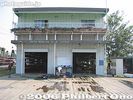
Seta Rowing Club's clubhouse. Boats are stored on the bottom floor, while the 2nd floor has office space, ergo machines, meeting room, locker room, etc. Web site here
|
|
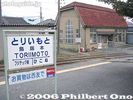
Although the Honjin is long gone, there are a few reminders of its shukuba past. Near Ohmi Railways Toriimoto Station. Map
|
|

Koganei Park sakura
|
|

Going to visitors center
|
|

Path to Wada House entrance
|
|

View of Chiba Park from monorail. 綿打池
|
|

Welcome sign at Nagano Station
|
|

The shrine also holds the Hino Matsuri on May 2-3.
|
|

Peace Fountain with the Peace Statue in the distanceA fountain of water was made for the victims who were desperate for water.
|
|

There are five rows of streamers. In Japan, the koi carp is regarded as a symbol of valiant manhood because it swims up the river against the rapids.
|
|
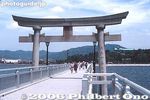
Torii on Takeshima island
|
|
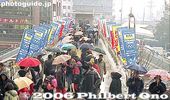
Nagano Station, East Exit to Olympic PlazaAt the East Exit of Nagano Station, this bridge, lined with advertising banners, led the way to the Olympic Plaza which featured ten tent pavilions made by official sponsors.
|
|

Kasumigaike Pond and the famous Kotoji-toro stone lantern. The lantern is shaped like a bridge that supports a string on the koto instrument. 霞ヶ池 徽軫灯籠
|
|

Temple gate and flag
|
|

The Kusatsu-juku Honjin is decorated with curtains. MAP
|
|
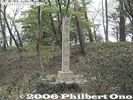
The castle met its demise in 1522 less than 60 years after it was built, after a war within the Gamou Clan. It now serves as a large hilltop park with good views of the surroundings. Otowa Castle marker
|
|
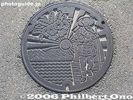
Manhole with the symbol of Hino merchant, Shiga Prefecture
|
|

Torii at Umamioka Watamuki Shrine in Hino, Shiga Pref.
|
|

Path to Nakano Castle ruins
|
|

Kunchi monument at Karatsu StationKaratsu's most famous festival is the Hikiyama Kunchi Festival where large floats are paraded around.
|
|
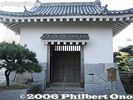
The turret turned out to be a public toilet...Looked nice enough to photograph, but when I walked around it, it smelled like the toilet it was.
|
|
|

Pontocho is a narrow alley and known as a geisha district.
|
|

Carrying back a single sculling boat
|
|
|
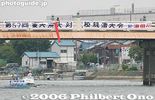
Karahashi Bridge as the starting point for alumni races
|
|

Main street in front of station
|
|

Steps to the castle tower
|
|

Pre-festival event held in the afternoon, Yamato Awa Odori
|
|

Rear of road marker
|
|
|

Gosha Shrine torii
|
|

End of the Toda Boat Course, near the 2000-meter finish line.
|
|

The plum trees are on a small hill.
|
|

Train platform of Kairakuen Station
|
|

Pumping (or humping) the...
|
|
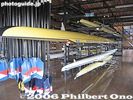
Oars and boats stored on the bottom floor. The club offers 2-hour rowing lessons on Sundays during May to Nov. Address: 6-1 Ogaya, Otsu, Shiga 520-2144 Japan. Phone/Fax: 077-545-9961, Email: info@setarc.jp
|
|
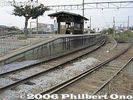
Ohmi Railways Toriimoto Station platform
|
|

Huge trees shower you with cherry blossoms.
|
|

Close-up of Ogimachi
|
|

Visitors Center entrance courtyard
|
|

Main house on left and latrine on right with large vats to gather fertilizer.
|
|

Looks like Suganuma, another village in Gokayama area.
|
|

Chiba Park approach
|
|
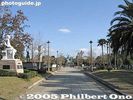
Path to Peace Statue
|
|

The cable length is 250 meters and 13mmm thick. There are about 1,200 carp streamers. They are reused every year and donated by local families. (I also noticed a few advertising carps.)
|
|
|
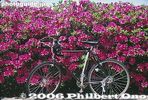
My bicycle somewhere in Gamagori.
|
|
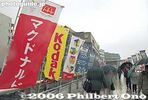
To Olympic Plaza
|
|

Famous Kotoji-toro stone lantern 徽軫灯籠
|
|

Play room for kids on Hanamatsuri
|
|

Shukuba Odori dance in the shopping arcade.Held 11:00 - 12:00
|
|

Suzuka Quasi-National Park markerThe area is within this park.
|
|

Omi Hino Merchant House. The former home of Hino merchant Yamanaka Hyouemon was donated to the town in 1981. Now a museum exhibiting the history and artifacts of the Hino merchants. 近江日野商人館Small admission charged. Open 9 am to 4 pm, closed on Mon. and Fri. Close to the center of town.
Address: Okubo 1011, Hino-cho
Phone No.: 0748-52-0007
山中兵右衛門
|
|

Stone bridge
|
|
|
|

Dance program for 2005.
|
|
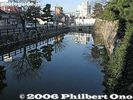
Higo Moat
|
|
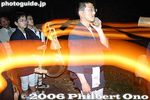
The torch procession rings out.
|
|
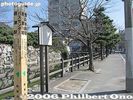
Sightseeing marker in English
|
|

The place was not as crowded as you would think.
|
|

Stage entertainment (Azuchi Castle ruins in background).
|
|

Kakegawa, Shizuoka
|
|
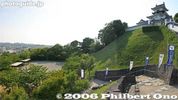
Castle tower
|
|
|

Marker for the Kabuto-ya inn
|
|

They use four-man boats (called "knuckle four" in Japanese) with sliding seats. It is stable and safe, ideal for beginners.
|
|
|
|

Housing for visiting rowing teams whose school flags are displayed.
|
|

Hanegi Park has plum blossoms in mid-Feb. to early Mar. It has about 700 plum trees and also sports facilities and public library.
|
|

Plum Blossom Queen at Kairakuen StationShe was passing out maps of the garden. It was a nice touch to see two of these kimono beauties greeting us.
|
|

The festival is wildly popular with people from overseas.The shrine had various phallus props to pose with.
|
|
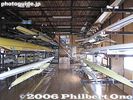
Many boats are made in Italy.
|
|

Ohmi Railways Toriimoto Station building
|
|
|
|
|

Main house with a recently rethatched roof, making it look very smooth.
|
|

Sekigahara saw one of Japan's most pivotal battles on Oct. 21, 1600 (Sept. 15 of Keicho 5) between Tokugawa Ieyasu's Eastern Forces and Toyotomi Hideyoshi loyalist Ishida Mitsunari's Western Forces. Ieyasu's victory in the Battle of Sekigahara sealed Japan's historical fate for the next 250 years. The former battlefield is dotted with monuments indicating the positions of various warlords during the battle.
This photo shows Mt. Momokubari where Tokugawa Ieyasu first set up his base camp for the Battle of Sekigahara. It is next to busy Route 21. A short distance east of Sekigahara Station. The former Sekigahara battlefield has numerous monuments.
|
|

Banners and a monument mark the spot on Mt. Momokubari where Tokugawa Ieyasu's first base camp was established during the Battle of Sekigahara on Sept. 15, 1600.
|
|

Ieyasu and his troops were here from about 6 am to 10 am on the day of the Sekigahara battle. He later moved closer to the front line as the battle was going his way. This is a National Historic Place. 桃配山 徳川家康最初陣跡
|
|

Steps going up to Tokugawa Ieyasu's first base camp at Momokubari during the Battle of Sekigahara on Oct. 21, 1600 (Sept. 15 of Keicho 5). Today it's just a small hill. The highway seemed to have cut through most of it.
|
|

Steps going up to Tokugawa Ieyasu's first base camp during the Battle of Sekigahara.
|
|

At the top, see the two large rocks which served as a table and bench for Ieyasu. 家康の腰掛岩と机石
|
|

Monuments marking Tokugawa Ieyasu's first base camp during the Battle of Sekigahara. The banners have the Tokugawa family crest.
|
|

View of the Sekigahara battlefield from Tokugawa Ieyasu's first base camp at Momokubari.
|
|

Monument marking Tokugawa Ieyasu's first base camp during the Battle of Sekigahara.
|
|

Another smaller monument marking Tokugawa Ieyasu's first base camp during the Battle of Sekigahara.
|
|

Sign explaining that the two rocks below were said to be used as a bench and table for Ieyasu.
|
|

Behind the monuments is a trail probably used by Ieyasu's troops on Mt. Momokubari-yama.
|
|
|
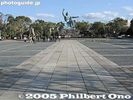
Peace StatueEvery Aug. 9, the anniversary of the atomic bombing, a memorial service is held here.
|
|

To mark the song's 100th anniversary, a new song monument was unveiled at Kyoto University (Yoshida-South Campus) on Nov. 25, 2017.
|
|

JR Gamagori Station. In the foreground is my bicycle.
|
|
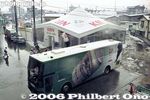
Pavilion by Kirin Brewery.Notice the "wrap" bus passing in front.
|
|

Hanamatsuri altar
|
|

The strolling path is not a perfect circle, but you start and finish at the same point. The strolling path is lined with Japanese pines, flowering plants, maples, etc.
|
|

Start of Kusatsu Jidai Gyoretsu Procession 草津時代行列
|
|

Entrance to castle grounds, now a picnic and playground.
|
|
|

Stone bridge
|
|
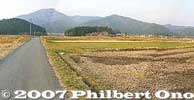
Panoramic view of where the Battle of Sekigahara started. Most battle monuments are within walking distance from the train station, but they are numerous and spread over a wide area.The battle started at the foot of the hill on the left of the road. The small hill on the right was where Shimazu Yoshihiro was stationed. Mt. Ibuki is in the background in the middle.
|
|

Nakano (Hino Castle) in Hino, Shiga Pref. The castle was built in 1534 by Lord Gamou Sadahide (1508-1579).
|
|

Barrels of sake next to the theater.
|
|
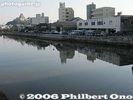
River and castle in the distance
|
|

Towering inferno of bamboo on fire. The shrine has a 5-meter tall pile of bamboo which is lit to make a towering inferno within the shrine grounds. Very dramatic.
|
|
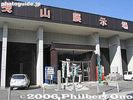
Hikiyama Float Exhibition Hall曳山展示場
|
|

Rowing team from Nagahama
|
|

Demonstration of matchlock guns, Azuchi Nobunaga Festival in Azuchi, Omi-Hachiman.
|
|

Kyoto Univ. in dark blue T-shirts
|
|

Stairs to Kakegawa Castle tower
|
|

Shimizu Bank
|
|

Yamato Station
|
|

Old Nakasendo Road and Dobashi Bridge. Supposedly, this is the bridge from where Hiroshige drew his print of Moriyama-juku.
|
|

Each boat has four rowers and cox who steers the rudder.
|
|
|
|
|

Plum Blossom Queen
|
|

Boat landing near finish line.
|
|

Dickhead hat. Actually, I don't know what they call it, but that's what I call it.
|
|
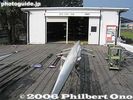
Right across the clubhouse is the Annex boat house.
|
|

Ohmi Railways Toriimoto Station building
|
|
|

Shirakawa-go 白川郷
|
|
|
|

Wada House, Shirakawa-go
|
|

Entry road to Ainokura village. Bus stop shelter on right.
|
|

White weeping cherry blossoms
|
|
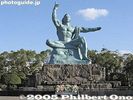
Peace StatueSculptor was Seibo Kitamura.
|
|
|

Front side of the monument has the Japanese lyrics and explanation of the song. Monument is made of stainless steel with a brushed-metal finish.
|
|

Olympic PlazaSnowlets House and Kodak's pavilion behind it.
|
|
|
|

Pouring sweet tea over the BuddhaWhen the Buddha was born in Lumbini Garden in Nepal, sweet rain is said to have fallen. Thus, sweet tea is poured over the baby Buddha statue in the Hanamatsuri altar.
|
|

Castle monument
|
|

Inside Omi Hino Merchant House近江日野商人館
|
|
|
|

The battle started at the foot of the hill on the left of the road. The small hill on the right was where Shimazu Yoshihiro was stationed. Mt. Ibuki is in the background in the middle.
|
|
|
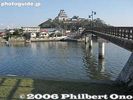
Bridge to castle城内橋
|
|
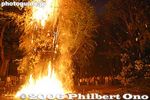
Misaki Shrine Fire Festival in Aisho. The shrine has a 5-meter tall pile of bamboo which is lit to make a towering inferno within the shrine grounds. Very dramatic. Also see the video at YouTube.
|
|
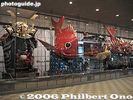
Inside Hikiyama Float Exhibition HallKunchi festival floats are displayed.
曳山展示場
|
|
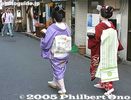
A geisha/geiko and maiko head to the theater to see the Kamogawa Odori. Notice the different obi sash on the back.A maiko is an apprentice geisha. Her obi sah on the back is long, as well as her sleeves.
|
|

They came from Hikone. 鉄砲隊演武(彦根鉄砲隊)
|
|
|
|
|

Shimizu Bank
|
|
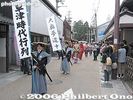
Kusatsu Shukuba Matsuri is held on April 29 to celebrate Kusatsu's history as a stage town on the Nakasendo and Tokaido Roads. The main highlight is this Kusatsu Jidai Gyoretsu procession from 11:45 am to 2 pm. This is the Tokaido Road.
|
|

Balloons, souvenirs and trinkets sold near the train station.
|
|

Dobashi Bridge
|
|

The green boat. 近江舞子上陸
|
|

Pile of straw to be lit. The fire is used to light all the torches.
|
|

Hosei Univ. cheering section on the first day (Aug. 24, 2006) of the 33rd All-Japan Intercollegiate Rowing Championships.
|
|
|

Entrance to garden via Tokiwa Shrine. One of Japan's three most famous gardens, Kairakuen is especially noted for thousands of plum blossom trees which bloom in Feb. and March.One of Japan's three most famous gardens, Kairakuen is especially noted for thousands of plum blossom trees which bloom in Feb. and March.
|
|

Carving daikon. Anybody can join in and carve. 大根削りLater to be auctioned off.
|
|
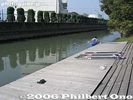
Club's boat dock. This narrow canal leads to Lake Biwa.
|
|
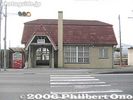
Toriimoto Station building built in 1931 when the station opened and still in use.
|
|

Low branches are common
|
|
|
|
|

Jisho-in Mausoleum
|
|

Way to Ainokura.
|
|
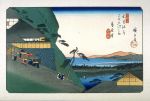
Hiroshige's woodblock print of Toriimoto (64th post town on the Nakasendo) from his Kisokaido series.
|
|

The Peace Statue was built in Aug. 1955, the 10th anniversary of the bombing. The Peace Statue was modeled after popular wrestler Rikidozan.
|
|

Sagami River Koi-nobori
|
|
|
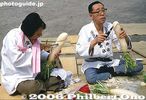
Carving daikon (old photo). These men were really good at carving the daikon.
|
|
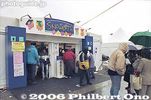
Entrance to Snowlets House at Olympic Plaza.The official store for Olympic souvenirs. There were a lot of ticket scalpers (all foreigners) hanging around the entrance. Inside, there was a ticket counter for events which still had seats.
|
|

Karasaki Pine Tree in Kenrokuen Garden, Kanazawa, Ishikawa Pref.
|
|

Hanamatsuri celebrates the Buddha's birthday on April 8. This is Tsukiji Honganji in Tokyo.The flowers symbolize Lumbini Garden where the Buddha was born in present-day Nepal.
|
|

Kusatsu Shukuba Festival, Shiga Pref. 大奥夢道中
|
|

Hilltop left
|
|

Lacquerware sold by Hino merchants近江日野商人館
|
|

Mikoshi portable shrine
|
|

Path to the Kaisenchi or site where the battle started, at the foot of the hill straight ahead. 開戦地
|
|

In 1582, when Oda Nobunaga was assassinated in Kyoto, Lord Gamo Katahide brought Nobunaga's wife and children from Azuchi Castle to Hino Castle for their safety. The castle was abandoned in 1597.
|
|
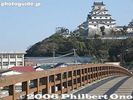
Jonai Bridge to castle城内橋
|
|
|
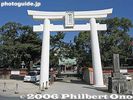
Karatsu Shrine
|
|

Pontocho Kaburenjo theater
|
|

Azaleas in full bloom along the lake edge
|
|
|

Finish line 300 meters later
|
|

Final gate to Castle tower
|
|

Shimizu Bank's relief of Kazutoyo and Chiyo
|
|
|

Tomon-in temple built by Buddhist Priest Saicho (Dengyo Daishi) to protect his Enryakuji temple on Mt. Hiei from demons from the east. 東門院
|
|

The boats are wooden, and a few decades old.
|
|

White and red torii
|
|
|

第33回全日本大学選手権大会・第46回オックスフォード盾レガッタ
|
|
| 32322 files on 129 page(s) |
1 |
 |
 |
 |
 |
|